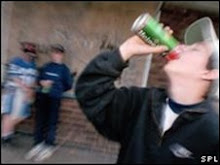
The underlying assumptions of the legal drinking age are to control sinful and dangerous alcohol consumption such as problem behavior, risk for addiction, and driving under the influence. Ultimately, the legal drinking age protects youths and anyone that can be affected by youths from alcohol and its effects (Sterne et al., 1967).
However, Sterne and her colleagues (1967) have found that legal drinking age objectives fall short and further produce adverse consequences:
1. By denying adults who are not yet legal to purchase alcohol because we fear they will drive drunk, we are suggesting that the behaviors of drinking and driving occurs as a combo when they are of legal age (Sterne et al., 1967).
2. The implementation of stringent youth-focused liquor laws is an inadequate way to introduce youths to adult responsibility (Sterne et al., 1967).
3. Prohibiting youths from buying and consuming alcohol, gives way for illegal opportunity (Sterne et al., 1967).
Overall, the rise of the minimum age drinking legislation has discovered very little impact upon behavior. Studies that measure the outcomes of this law have shown no decline in consumption rates, intoxication, drinking attitudes, or drinking problems. However, studies which show the effects of lowering the drinking age does not show increased alcohol related behaviors except for an increase in attendance at locations where alcohol was present (Perkins and Berkowitz, 1985).
Logically then, it is safer to reduce the legal drinking age as youths tend to flock to places where there are quantity controls, rather than staying home unsupervised and exposing one’s self to the dangers of overconsumption to alcohol.


No comments:
Post a Comment